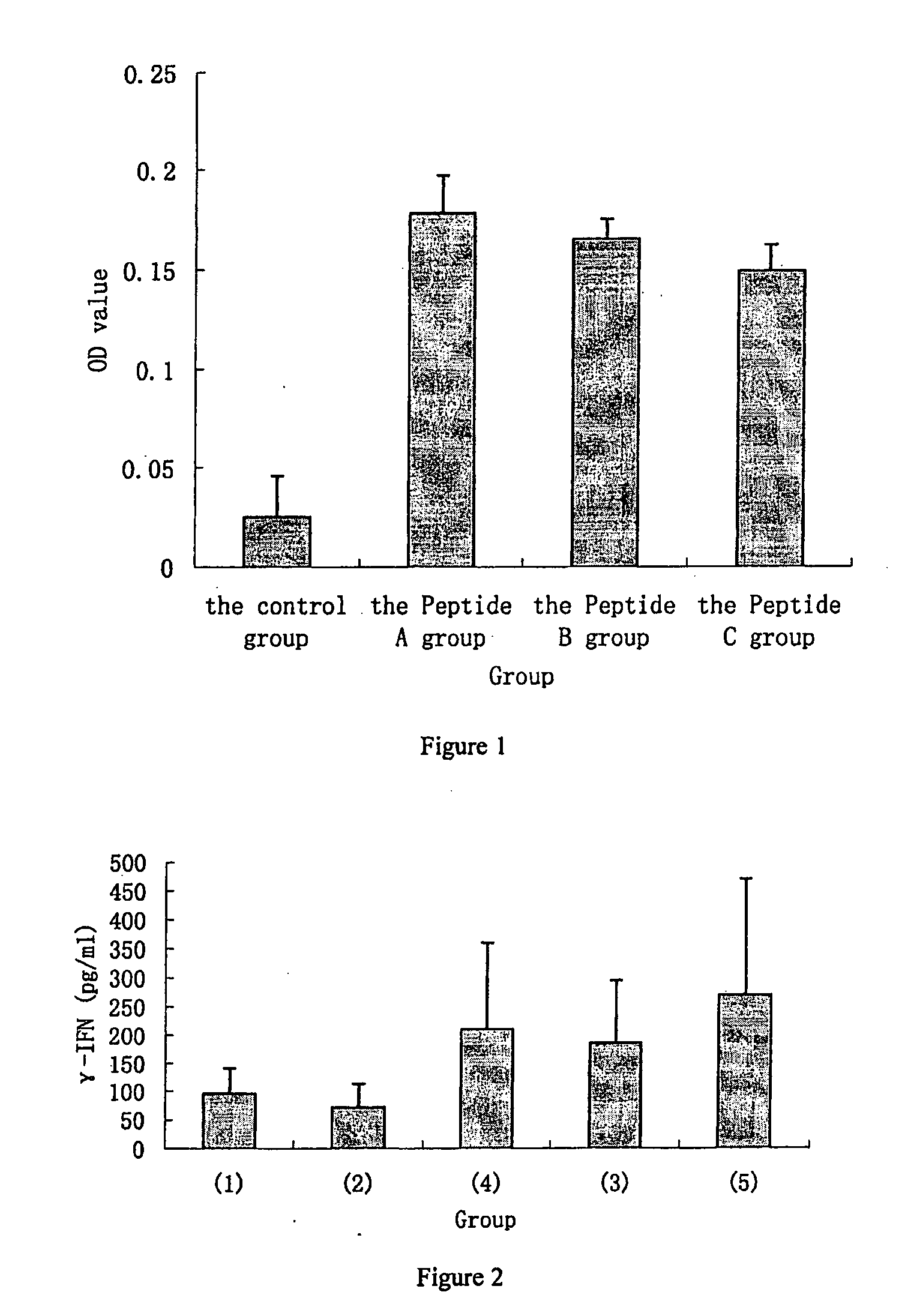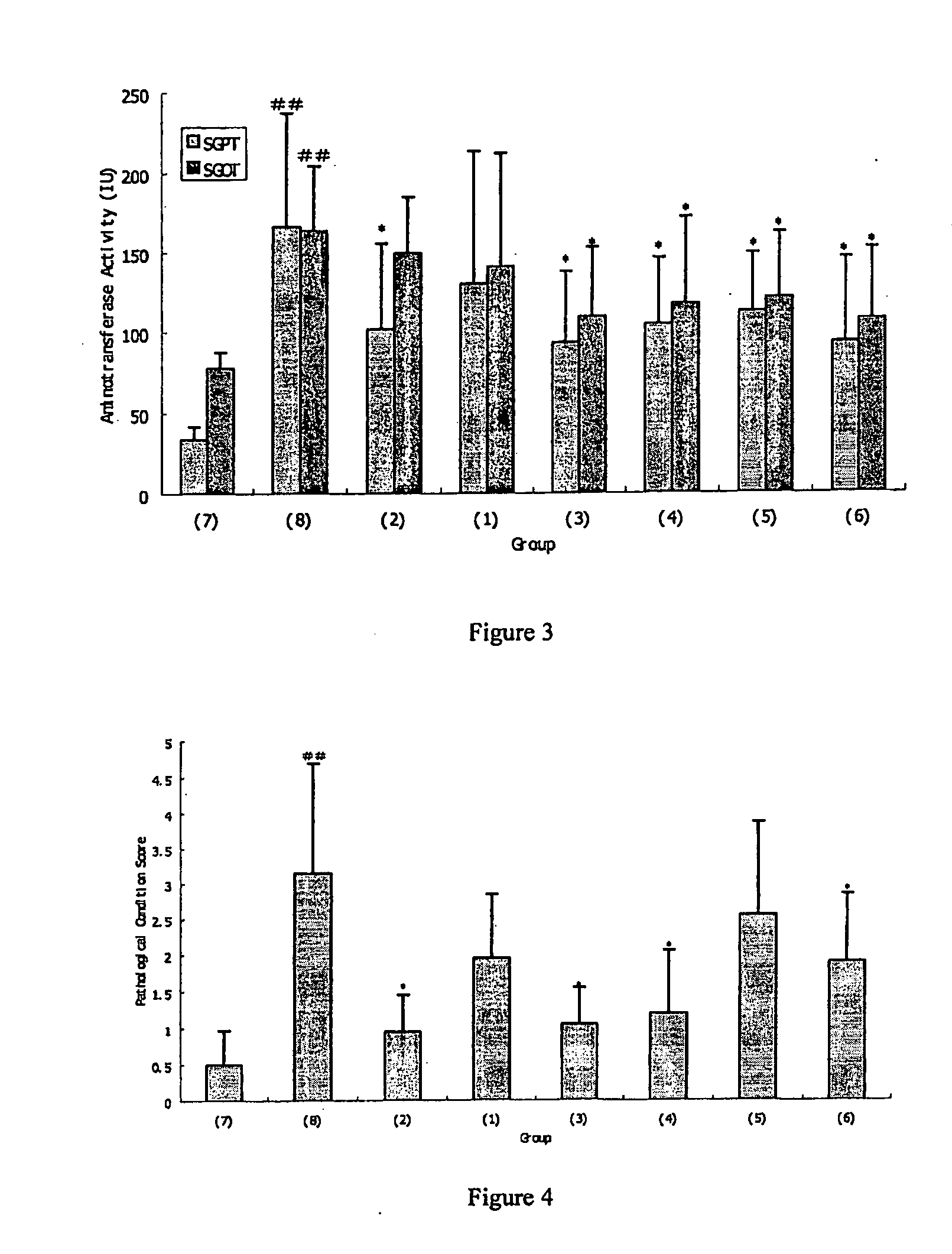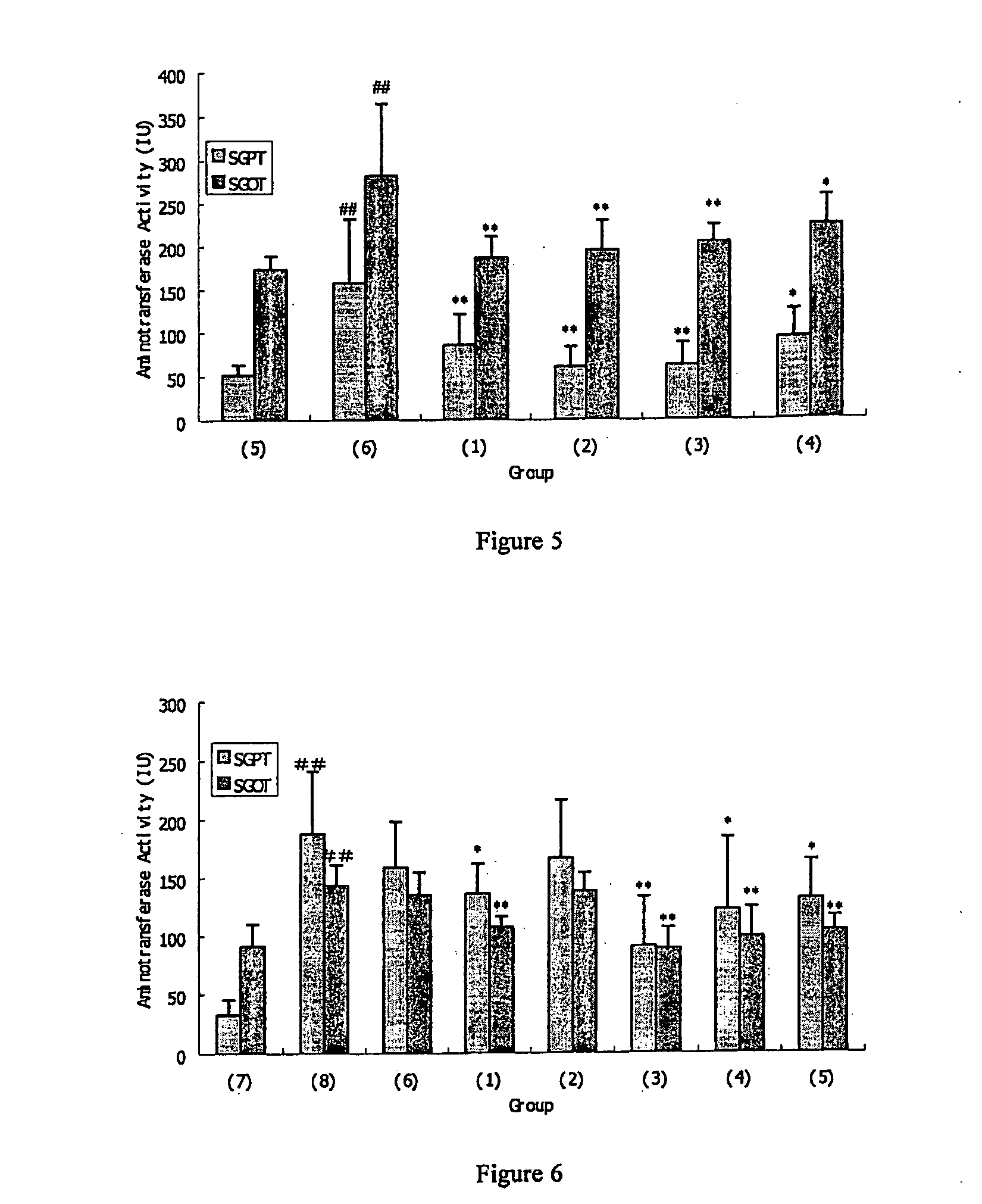Peptides for Preventing or Treating Liver Damage
- Summary
- Abstract
- Description
- Claims
- Application Information
AI Technical Summary
Benefits of technology
Problems solved by technology
Method used
Image
Examples
example 1
Synthesis of Peptides
[0057]Three peptides of the following sequences were synthesized by solid phase peptide synthesis using Model 413A Automatic Peptide Synthesizer (purchased from Perkin Elmer Corporation): GQTYTSG (referred hereinafter to as “Peptide A”), GQTYTSGA (referred hereinafter to as “Peptide B”) and GQTYTSGG (referred hereinafter to as “Peptide C”). All of amino acids in the three peptides are L-amino acids. The detailed synthesis was as follows: at first, the reactive groups of the amino acid monomers were protected by protecting groups, i.e., 9-fluorenylmethoxycarbonyl (Fmoc) groups for the α-amino groups of amino acids, teriarybutyl groups for the side chains of Ser and Thr, and trityl (Trt) groups for the side chains of Gln. Then the coupling of the protected amino acids was performed successively with N,N-diisopropylcarbodiimide / 1-hydroxylbenzotriazole as coupling agent, for 40 min for each amino acid. In the presence of 15% of dithioglycol / dimethyl thioether / anisol...
example 2
Preparation of a Peptide Conjugate
[0058]Peptide A was conjugated to bovine serum albumin (BSA) by glutaraldehyde to generate a conjugate. The detailed conjugation process was as follows: 1 mg of Peptide A synthesized in Example 1 was dissolved into 0.5 ml PBS (pH7.4,0.02 mol / L); and 4.5 mg of BSA was dissolved into 4.5 ml PBS (pH7.4,0.02 mol / L). The resultant Peptide A solution was mixed with the BSA solution, and then added gently to 1 ml of 0.1% glutaraldehyde. The conjugation reaction was performed for 12 hours at room temperature in the dark. Then glycine solution (1 mol / L) was added gently to quench the reaction, before dialysis into PBS (pH7.4, 0.02 mol / L) overnight, and then freeze-drying. The resultant Peptide A-BSA conjugate product was referred to as Peptide Conjugate A.
example 3
Reactivity of the Peptides to Sera of Patients with Hepatitis C
[0059]3.1 Sources of Sera
[0060]Anti-HCV antibody-positive sera: randomly obtained from inpatients infected with HCV in the Liberation Army 302 Hospital from 2000 to 2001.
[0061]Control sera: obtained from healthy blood donors, who had normal blood indexes in each assay.
[0062]Sera of patients with Hepatitis B (HBV): obtained from inpatients with Hepatitis B in the Liberation Army 302 Hospital, who was positive for the surface antigen of Hepatitis B virus as assayed.
[0063]3.2 Method of Determining Reactivity to Sera by Indirect ELISA Assay
[0064]The reactivity of the individual peptide of the invention to sera was detected by standard indirect ELISA technology using Model DG3022 Enzyme-Linked Immunoassay Analyzer (purchased from Perkin Elmer Corporation). 10 μg of Peptide A, Peptide B, Peptide C, and Peptide Conjugate A were added respectively into the basic coating buffer (0.1 mol / L NaHCO3, 35 μl; 0.1 mol / L Na2CO3, 15 μ; H2...
PUM
 Login to View More
Login to View More Abstract
Description
Claims
Application Information
 Login to View More
Login to View More - R&D
- Intellectual Property
- Life Sciences
- Materials
- Tech Scout
- Unparalleled Data Quality
- Higher Quality Content
- 60% Fewer Hallucinations
Browse by: Latest US Patents, China's latest patents, Technical Efficacy Thesaurus, Application Domain, Technology Topic, Popular Technical Reports.
© 2025 PatSnap. All rights reserved.Legal|Privacy policy|Modern Slavery Act Transparency Statement|Sitemap|About US| Contact US: help@patsnap.com



